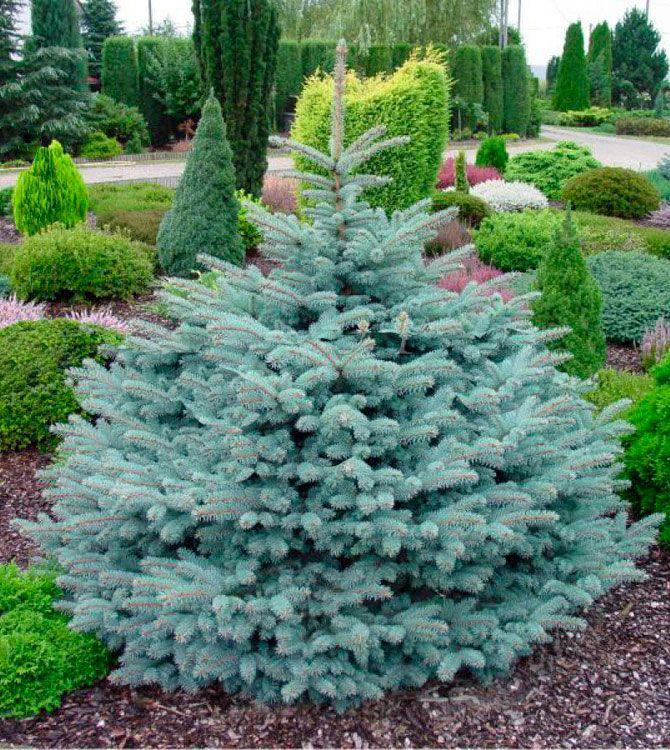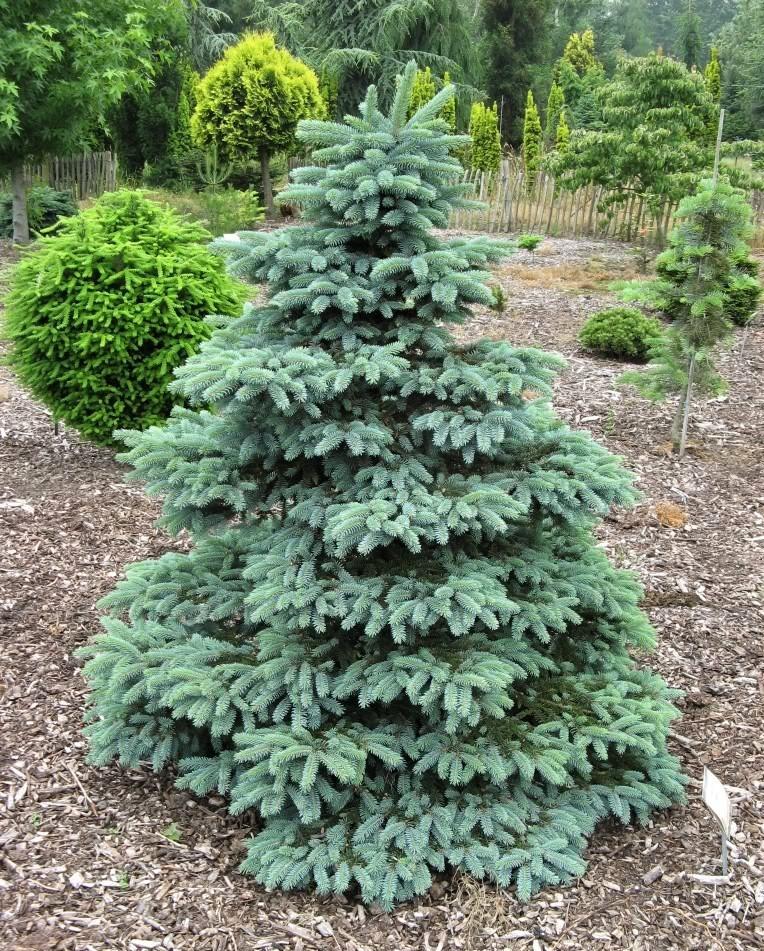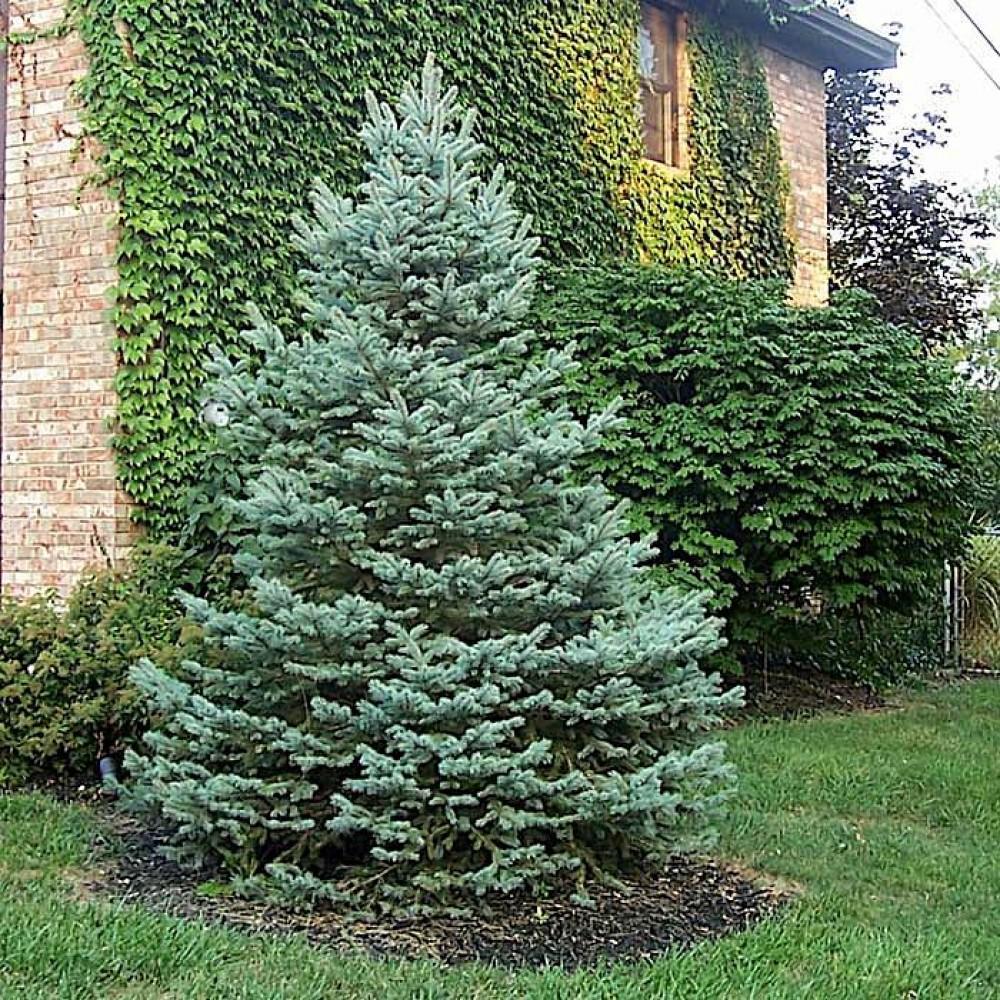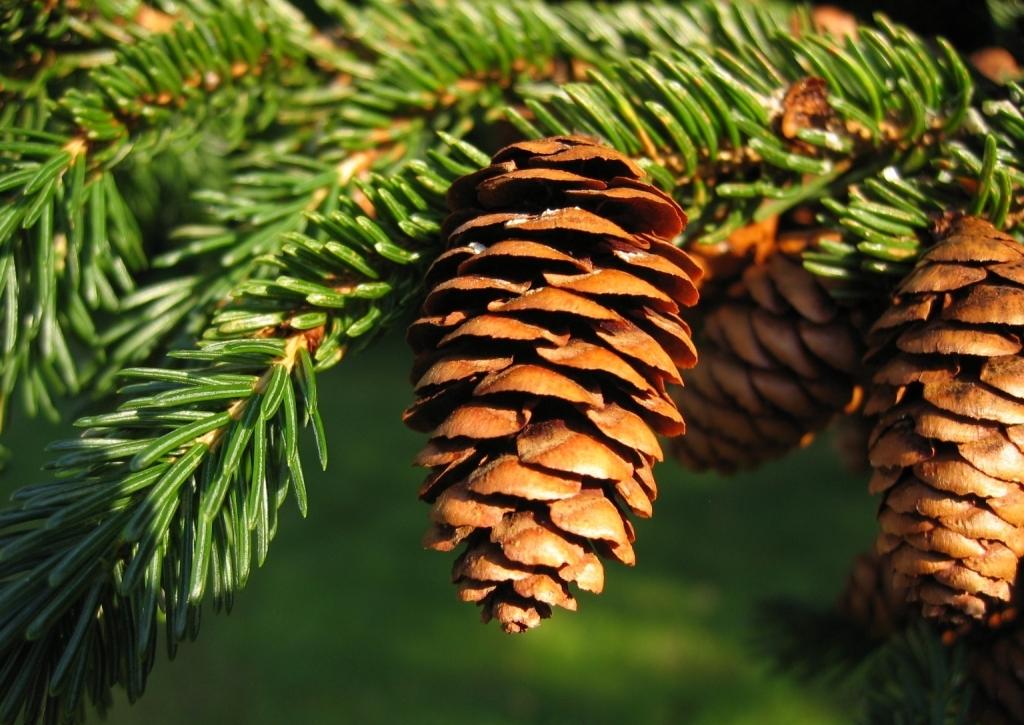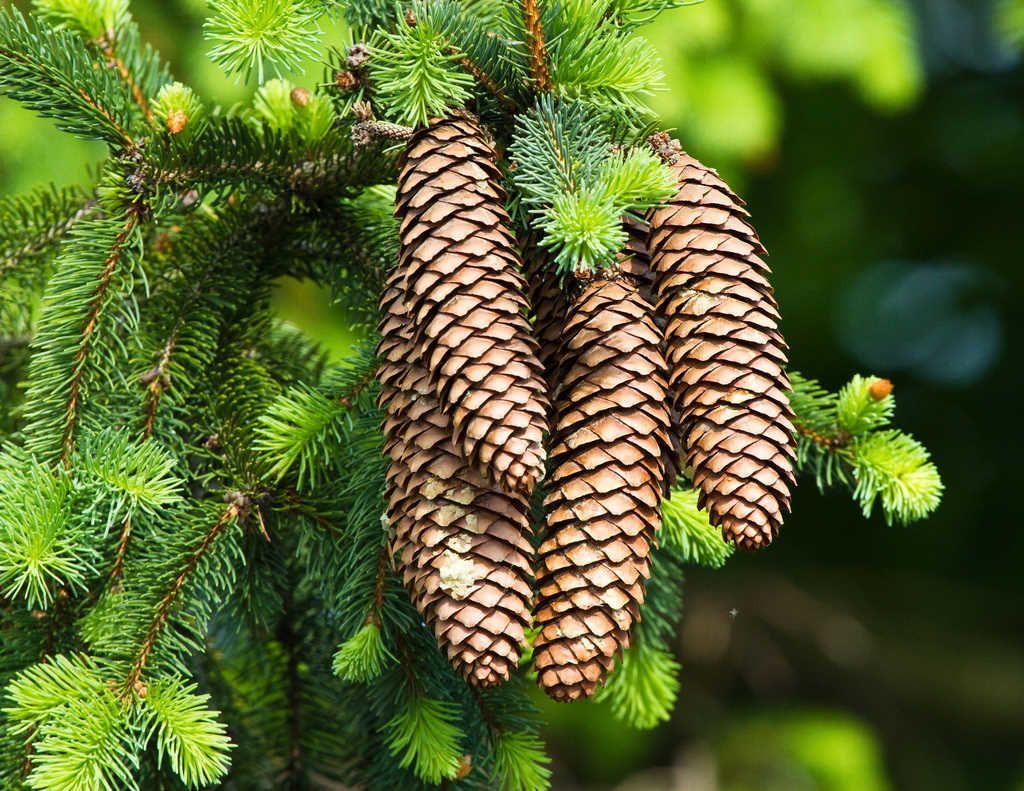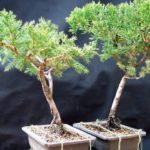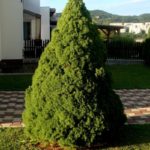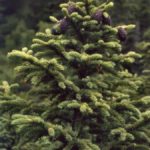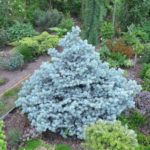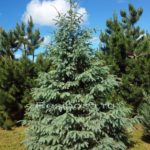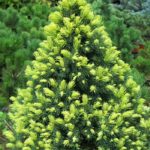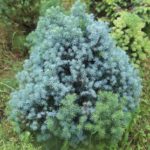Spruce is a spectacular evergreen plant that adds unique charm to any planting. Thorny trees often become the main accent of the composition and make the area more comfortable. There are quite a few varieties of such crops, which differ in many parameters. At the same time, decorative spruce trees are most often used in landscape design.
Variety of varieties
More than 20 varieties of fir trees are used to design parks. When landscaping summer cottages, as a rule, the following types are used:
- A typical tree has a pyramidal shape.It is characterized by a cushion-shaped crown. More than 50 garden forms have been created based on this culture. Among them there are medium-sized trees, the height of which is no more than 3 meters. There are also dwarf crops, the maximum height of which does not exceed 1.2 meters.
- Prickly spruce – the name is due to the fact that the plant is distinguished by very sharp needles. Culture has 70 forms. Most of them are tall trees that reach 40 meters. There are also dwarf varieties measuring no more than 2 meters.
- Gray spruce – its name is due to the unusual color of the needles. It has a smoky blue tint. In total, there are more than 20 varieties of culture. Tall plants resemble pyramids, while dwarf plants have a spherical shape.
Dwarf spruces
This variety includes plants whose adult size is significantly smaller than the original mother crop. Thus, in natural conditions, the common spruce Picea abies reaches a height of 50 meters. The ornamental variety of this crop is known as Picea abies Nidiformis. Its height does not exceed 2-3 meters.
The key advantage of dwarf plants is the minimal growth of young branches. They increase by a maximum of 10-15 centimeters per year. Of the modern dwarf varieties, the most popular are coniferous plants with a spherical or nest-shaped crown.
To decorate rocky gardens or small borders, you should use the dwarf spruce Nidiformis. An adult plant does not exceed 40 centimeters in height. In this case, the trees form a spreading crown with a diameter of up to 1 meter.
The Little Gem variety is considered an equally attractive plant.The shoots of this plant extend from the central part of the crown and form a hemispherical cushion. The tree looks very beautiful when grown in a standard form. It is recommended to plant it in a floor pot.
The dwarf spruce Will's Zwerg has a beautiful dense crown of a narrow conical shape. The plant has beautiful milky shoots with soft green needles. This evergreen shrub fits perfectly into landscape compositions and can be used to decorate small areas. It can be used in group compositions or as a solitaire.
Medium-sized varieties
When decorating summer cottages, medium-sized plants are also often used, the height of which does not exceed 15 meters. Spruce trees with soft spreading crowns allow you to create a shady area for relaxation.
They are best placed alone - in the central part of a green lawn or against the background of a building wall. The crown of such spruce trees usually has a clear shape. Shrubs and flowers will not grow in the shade. To get a complete composition, it is recommended to decorate the area with large white boulders.
One of the most common types of conifers is blue spruce. Landscape designers value this plant for its low maintenance requirements. They can be planted near wooden buildings and along garden paths. It is important to consider that this plant cannot withstand temperature fluctuations. It is recommended to grow it only in temperate climates.
One of the most popular representatives of this species is the spruce Picea pungens Blue Diamond. The plant is distinguished by a tall thin trunk and has a neat conical crown. It is often used to decorate mixed mixborders.
Weeping varieties of spruce trees help add variety to the collection. Such plants strive for an aquatic environment. Therefore, they can be safely placed near bodies of water. The maximum size of mature trees reaches 10-15 meters. Moreover, their width is 2-3 meters.
Has excellent decorative properties Serbian spruce Glauka Pendula. It has flexible thin shoots. The use of this plant allows you to implement non-standard solutions when creating garden compositions.
Piccolo spruce is considered one of the most elegant varieties. This plant is characterized by rich emerald green needles, which have a slight bluish color. This crop looks great in group plantings.
The Maigold spruce looks great against the background of green plants. It looks great when used as a tapeworm. Young shoots are creamy-yellow in color and look very impressive. As they develop, they change their shade, becoming bluish-green. The tree reaches a height of 6 meters and has a pyramidal shape.
Combinations of conifers
To decorate a dacha, it is permissible to use spruce trees of various types and varieties. This allows you to get a more original and picturesque composition. Tall conifers fit well into the composition as tapeworms. More compact plants can be combined with other plantings.
When designing a site, it is recommended to take into account the following features:
- The design should not be too colorful. When creating a composition of three coniferous plants, you should use 2 colors.When composing an ensemble of 5 evergreens, it is recommended to take 3 colors. When implementing a multi-level composition of 20-30 plants, the element should be placed in groups. At the same time, they need to be selected according to shades.
- When composing a composition, it is important to place accents correctly. Low plants should be placed in the foreground, medium-sized plants should be placed in the background.
- In order not to get too dense plantings, you should arrange a regular or Moorish lawn in the tree trunk circle. Dark green needles will help draw attention to the beauty of flowering bushes.
- Shrubs that have unusual leaf colors will be a good addition to conifers. It could be mock orange, weigela or barberry.
How to plant spruce
To plant a spruce, you need to do the following:
- Make a round hole and pour drainage into it.
- Fill the hole with nutrient substrate and add plenty of water.
- Carefully remove the seedling from the container and immerse it in the hole.
- Align the trunk.
- Fill the voids with soil mixture.
- Fill the hole with water. For 1 plant you need to use at least 10 liters of liquid.
- Make a small depression near the trunk for subsequent watering.
- Cover the tree trunk circle with mulch. To do this, it is permissible to use covering materials, pebbles, gravel and crushed bricks.
It is important to consider that the culture has a superficial root system. Therefore, when planting, you should not compact the soil at a distance of 1 meter from the tree.
How to care
Caring for common spruce is simple. It doesn't require much time or effort. The plant does not need to be replanted or pruned. In the summer, the tree has enough natural precipitation. However, in particularly hot weather, it is recommended to water the crop at least once a week.In this case, it is worth spraying the crown with water.
After the soil is moistened, a dry crust may appear on the surface. In this case, the soil must be carefully loosened. During the first 2 years, it is important to protect the conifer from severe temperature drops. To do this, at the end of autumn, the tree trunk circle needs to be covered with mulch material.
In spring there is a risk of damage to the crop from sunlight. This can result in burns. You can notice the appearance of problems by the brown color of the needles. To avoid damage, experienced gardeners advise wrapping the spruce trunk in special material with the onset of spring. It should diffuse light and at the same time allow air to pass through.
When growing coniferous plants, there is a risk of encountering infectious pathologies. To avoid negative consequences, it is important to detect diseases in time and take appropriate measures. Spruce trees are more susceptible to the following pathologies:
- Rust - appears as an orange coating on the branches. In this case, the needles become yellow and fall off. Such remedies as “Vectra” and “Glyokladin” will help to cope with the problem.
- Schutte - this disease is associated with fungal infection. The needles become covered with a white coating, acquire a dark color and crumble. If the situation is not taken to extremes, the plant can be cured. First, it needs to be sprinkled with a solution of copper sulfate, and then treated with Trichodermin. You can also use Alirin-B.
Application
Decorative spruce trees are often used in landscape design. Dwarf plants with pyramidal or spreading needles of different shades look beautiful on the slopes of streams and alpine hills. Small trees go well with ornamental shrubs, ground cover crops and perennial flowers. Spruce trees look no less successful with heathers and heathers.
Since coniferous trees have different shapes and shades, they make it possible to design a rocky landscape corner that will remain decorative throughout the year. Spruce is easy to trim. Therefore, it can be given an original shape and used for growing hedges measuring 1.5-3 meters.
In landscape design, spruce can be used in any form - as a single crop and as group plantings. Plants with flowering shrubs and herbaceous crops look no less successful. A tree planted as a tapeworm looks especially good against the backdrop of an emerald lawn.
Medium-sized crops that are grown as a dominant plant can be placed near the house. This allows you to create a visual counterbalance to the structure of the building. In winter, the spruce can be dressed up, which will help create the atmosphere of the New Year holidays.
The healing properties of spruce are no less in demand. At the same time, the leading position in terms of the content of valuable components is occupied by common spruce. Medicinal properties are characteristic of the needles, young twigs and cones of the plant. They contain many essential oils, tanning components, resins and vitamins. Also, plant elements contain a large amount of phytoncides and microelements.
Spruce decoctions and infusions are used to treat various inflammations of the respiratory organs and urinary tract. They can also be used to combat sinusitis and other pathologies in the nasopharynx. Baths from buds and spruce branches are used for dermatological pathologies, arthrosis, and arthritis. They are also useful for the development of gout.
A brew made from fresh spruce buds can be used as a vitamin tea.It is important to take into account that this remedy is contraindicated for gastric ulcers. To make the simplest infusion, you need to chop 40 grams of pine needles, add 250 milliliters of boiling water and cook for 20 minutes. After which the product needs to be infused. The finished product should be drunk throughout the day. It will help replenish vitamin C reserves in the body.
Spruce needles contain a lot of phosphorus, potassium, iron and vitamins. It contains a large amount of ascorbic acid and carotene. Thanks to this, the composition is ideal for the production of preventive agents for periodontal disease. The substance is also used to produce pine extracts for baths.
Spruce essential oil is used to make camphor. This substance is of great benefit for heart pathologies. Inhalations using pine needle essential oil help cope with catarrhal lesions of the bronchi and throat.
Spruce is considered a very useful plant from an environmental point of view. The needles perform filtering functions in air gas exchange. Dust particles and harmful microorganisms settle in its waxy coating. This helps clean the air.
In addition, substances synthesized by conifers have a beneficial effect on the functioning of the body, improve respiratory functions and normalize blood circulation. In addition, they have a good effect on a person’s mental state.
Phytoncides, which are produced by the needles of the plant, purify the air even in the most polluted places. At the same time, the spruce itself normally perceives such growing conditions.
Decorative spruce trees are considered quite common and sought-after plants, which are often used in landscape design. It is important to choose the right crop and provide it with quality care.When composing garden compositions, you should focus on the recommendations of experts in this field. Only in this case will it be possible to obtain a harmonious ensemble.

